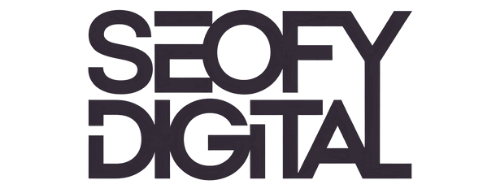Ever felt like a hamster on a content creation wheel?
You’re constantly churning out blog posts, social media updates, and emails, but there just aren’t enough hours in the day. The pressure to produce fresh, engaging content is real, and for many digital marketers, it can feel like a never-ending battle.
But what if there was a way to save time and resources, while still keeping your content calendar brimming with high-quality material? Enter the world of Private Label Rights (PLR), a game-changer for busy digital marketers.
PLR isn’t a magic bullet, but it’s a powerful tool that can help you streamline your content creation process. Whether you’re a solopreneur juggling multiple projects or a small business owner managing a growing team, PLR can be your secret weapon for building a consistent and engaging online presence.
In this blog post, we’ll delve deep into the world of PLR, exploring its benefits, potential drawbacks, and most importantly, how to use it effectively to boost your digital marketing efforts. So, ditch the hamster wheel and buckle up – it’s time to explore the exciting world of PLR!
Contents
Understanding PLR
PLR stands for Private Label Rights. It refers to content that you can purchase and then use as your own, with certain restrictions. This means you can modify, edit, and distribute the content under your own brand name.
PLR content is typically created by content mills or individual writers and sold to businesses or individuals who need content. It comes in various formats, including articles, blog posts, ebooks, and software.
The Benefits of Using PLR Content
Time-Saving: One of the biggest benefits of PLR is that it can save you a significant amount of time. Instead of spending hours writing original content, you can simply purchase high-quality PLR content and customize it to fit your needs.
Cost-Effective: PLR content is often more affordable than hiring a freelance writer or content agency to create original content.
Consistent Content Supply: Using PLR content can help you maintain a consistent content calendar, ensuring that you’re regularly publishing new content.
Improved Productivity: By leveraging PLR content, you can increase your productivity and focus on other important tasks.
How to Use PLR Content Effectively
To maximize the benefits of PLR content, it’s important to use it effectively:
- Quality Control: Always choose high-quality PLR content that is well-written and informative.
- Customization: Take the time to customize PLR content to fit your brand and audience. This involves editing the content, adding your own voice, and ensuring it aligns with your overall content strategy.
- Legal Considerations: Be aware of copyright and licensing restrictions associated with PLR content. Always check the terms of use to ensure you’re using the content legally.
- Building Trust and Authority: While PLR content can be a valuable tool, it’s important to create original content as well. This will help you build trust with your audience and establish yourself as an authority in your niche.
The Risks and Limitations of PLR Content

While PLR content can be a great way to save time and money, it’s important to be aware of the potential risks:
- Lack of Originality: Overreliance on PLR content can lead to a lack of originality and creativity.
- Quality Issues: Not all PLR content is created equal. Some content may be poorly written, poorly researched, or outdated.
- Negative Impact on SEO: Using low-quality or duplicate content can negatively impact your website’s SEO.
The Future of PLR
The future of PLR is promising, with emerging technologies like AI and machine learning. We can expect to see more advanced PLR tools and services that can help content creators produce high-quality content more efficiently.
As content marketing continues to grow in importance, PLR will remain a valuable tool for businesses of all sizes. However, it’s important to use PLR responsibly and ethically. By understanding the benefits and limitations of PLR, you can leverage this powerful tool to achieve your content marketing goals.
Conclusion
PLR can be a valuable asset for digital marketers, but it’s important to use it wisely. By selecting high-quality content, customizing it to fit your brand, and using it strategically, you can save time, reduce costs, and improve your content marketing efforts.
Remember, while PLR can be a helpful tool, it’s not a substitute for original, high-quality content.
FAQ’s
Is PLR legal?
Yes, PLR content is legal to use as long as you have the appropriate rights and licenses. However, it’s important to check the terms of service of the PLR provider to ensure you’re using the content within the specified guidelines.
How can I find high-quality PLR content?
There are many online marketplaces where you can purchase PLR content. Look for reputable providers with a track record of delivering high-quality content. You can also join online communities and forums to find recommendations from other content creators.
Can I use PLR content as-is?
It’s generally not recommended to use PLR content as-is. You should always customize the content to fit your brand and audience. This includes editing the content, adding your own voice, and ensuring it aligns with your overall content strategy.
Will using PLR content negatively impact my website’s SEO?
Using low-quality or duplicate PLR content can negatively impact your website’s SEO. However, by customizing the content and adding value, you can mitigate this risk.
How can I add value to PLR content?
You can add value to PLR content by:
Editing and rewriting the content to improve readability and engagement.
Adding your own insights and experiences.
Incorporating relevant keywords and phrases.
Adding visuals like images and infographics.
Breaking up long paragraphs into smaller, more digestible chunks.
Is it ethical to use PLR content?
Using PLR content is ethical as long as you use it responsibly and transparently. Avoid plagiarism and always give credit where credit is due.








